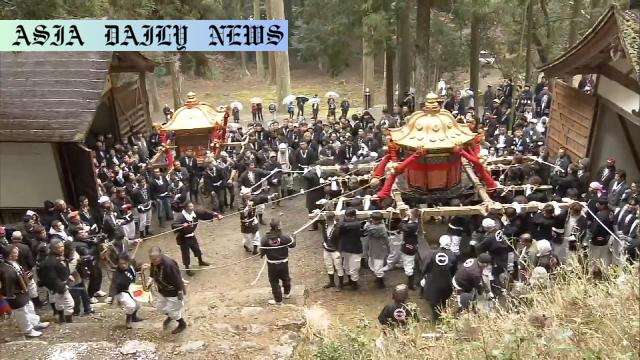Sanno Festival is an annual spring Shinto event rooted in history, featuring vibrant rituals and dynamic cultural experiences.
Sanno Festival takes place annually at Hiyoshi Taisha shrine near Lake Biwa, Japan.
The event includes ritual purification and carrying portable shrines to the mountain peak.
The festival dates back to the Heian Era, reflecting Japan’s cultural heritage.
April marks the main rituals of this grand traditional festival.

Historical Significance of the Sanno Festival
The Sanno Festival, an annual spring Shinto festival, is deeply rooted in Japanese history, dating back to the Heian Era, which spanned from the late eighth to the late 12th century. This cultural event is held at Hiyoshi Taisha Shrine, situated near the scenic Lake Biwa in Otsu City, Shiga Prefecture. The festival serves as a testament to Japan’s rich heritage and its community’s dedication to preserving tradition. Each year, locals and visitors come together, carrying forward a legacy that connects the present to the past through vibrant rituals and spiritual practices.
Purification Ritual and Community Participation
The festival commenced with a purification ritual led by a Shinto priest, attended by approximately 400 local residents and high school students. This ritual symbolizes spiritual cleansing and preparation for the journey ahead. Participants enthusiastically carried two portable shrines, each weighing nearly one ton, from the foot of a mountain to Hiyoshi Taisha Shrine, located at a height of 380 meters. The strenuous effort required to transport these shrines underscores the community’s devotion and commitment to the festival’s customs.
A Glimpse Into the Main Rituals
The portable shrines, essential elements of the festival, will play significant roles during the main rituals in April. These shrines are not just symbols of religious belief; they are cultural artifacts that represent the shrine’s deity and connect the community to its spiritual roots. With every step taken up the mountain, participants embody a sense of unity and resilience, making the festival a heartfelt celebration of faith and tradition.
Preserving Heritage in a Modern World
In an era where modernity often overshadows tradition, the Sanno Festival remains a beacon of cultural preservation. The involvement of high school students highlights an intergenerational effort to keep these traditions alive. Younger generations gain insights into their cultural heritage while actively participating, ensuring the longevity of such historic events. Observers, like a high school student interviewed during the festival, often describe the rituals as “dynamic,” celebrating both the physical and spiritual energy they bring to the community.
Conclusion: The Sanno Festival as a Cultural Jewel
The Sanno Festival is more than a religious event; it is a vibrant celebration of unity, heritage, and spirituality. From its origins in the Heian Era to its current form, the festival stands as a symbol of resilience and cultural pride for the people of Shiga Prefecture. Its dynamic rituals not only captivate participants but also inspire a sense of belonging and reverence for traditional practices. As the main rituals unfold in April, the Sanno Festival will undoubtedly continue to resonate as a cultural jewel of Japan.
Commentary
Understanding the Vibrance of the Sanno Festival
The Sanno Festival is a beautiful illustration of Japan’s commitment to preserving its cultural identity. Held annually at the Hiyoshi Taisha Shrine, this event not only reflects centuries-old Shinto traditions but also demonstrates the community’s continued enthusiasm for passing these practices down through generations. It is deeply moving to witness such efforts in an era dominated by modernization and digital transformation.
The Role of Community in Preserving Tradition
One of the most inspiring aspects of the Sanno Festival is the sense of unity it fosters among the participants. From high school students to elderly residents, people of all ages come together to engage in the rituals and ceremonies. The act of carrying nearly one-ton shrines up the mountain is more than just a physical task; it is symbolic of collective effort and devotion. This demonstration of community spirit in preserving tradition is both admirable and a lesson for societies around the world.
Connecting the Past, Present, and Future
What sets the Sanno Festival apart is its ability to bridge the past with the present. The festival, with its roots in the Heian Era, has adapted in ways that remain relevant to modern society while staying true to its origins. It is especially encouraging to see the involvement of young people, ensuring that these traditions are not locked in the past but are living facets of cultural expression. The inclusion of multiple generations not only enriches the festival but also secures its continuity for years to come.
Reflections on Cultural Significance
In a world increasingly interconnected yet fragmented in its appreciation for tradition, the Sanno Festival stands as a testament to cultural perseverance. It reminds us of the importance of rituals that bring people together, creating shared experiences and fostering a deeper understanding of heritage. This festival is a celebration of not only faith but also the enduring spirit of human connection through time-honored customs.


